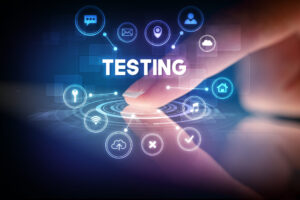
In today’s fast-changing tech world, quality engineering plays a crucial role in making sure software is top-notch. But it faces some tough challenges, like dealing with advanced technology and complex digital systems. The good news is that there are modern solutions to these challenges.
In this article, we explore the big problems quality engineering is dealing with in 2023. Then, we dive into eight smart practices that can make the process of testing software better. These practices ensure that software is reliable, secure, and user-friendly in a world where technology is evolving rapidly.
Current Challenges in Quality Engineering
In today’s rapidly evolving tech landscape, quality engineering faces a range of pressing challenges. Large organisations are aggressively investing in predictive analytics and data science, aiming to gain a competitive edge.
Simultaneously, technology-focused business intelligence centers are emerging to harness AI-driven solutions, signifying a seismic shift in testing paradigms. However, as the digital ecosystem becomes increasingly complex, with thousands of integration points among heterogeneous systems, ensuring comprehensive test coverage has become a formidable task.
Furthermore, the relentless pressure to release applications rapidly has led technology leaders to explore the untapped potential of AI in test solutions, necessitating a departure from traditional testing methodologies.
To tackle these multifaceted challenges, modern solutions are emerging;
First among them is shift-left testing.
A Merit expert says. “This approach involves moving testing activities earlier in the software development process. It means identifying and addressing issues at their inception, thus reducing the risk of costly late-stage fixes.”
Then come cloud-based testing environments. Transitioning to cloud-based testing offers scalability and flexibility, enabling teams to adapt quickly to changing requirements.
Third is enhanced user experience testing. A heightened focus on user experience testing ensures that software not only functions correctly but also provides a seamless and enjoyable user journey.
Stringent data security measures are essential to safeguard sensitive information in an era of rising cyber threats.
Lastly, as the Internet of Things (IoT) proliferates, testing strategies must encompass a multitude of interconnected devices and systems, ensuring their seamless operation.
Given the current challenges and technological evolutions taking place, let’s now look at the best practices quality engineering teams can adopt to make the entire software testing process more seamless and effective.
8 Quality Engineering Best Practices to Follow in 2023
Shift-Left Testing and Automation: Shift testing left in the development process to catch issues early. Utilise Test-Driven Development (TDD) and Behavior-Driven Development (BDD) alongside automated testing to ensure code quality from the outset. This includes automating repetitive test cases to increase efficiency and reduce errors.
Continuous Testing and Integration: Implement Continuous Integration and Continuous Deployment (CI/CD) pipelines to automate testing at every stage of development. Leverage containerisation and orchestration tools (e.g., Docker, Kubernetes) for consistent testing environments.
Performance and Security Testing: Conduct thorough performance testing to assess an application’s scalability and identify bottlenecks. Simultaneously, integrate security testing into the development process to identify vulnerabilities early. This involves using static code analysis, dynamic scanning, and penetration testing tools.
User Experience (UX) and Accessibility Testing: Prioritise UX testing to evaluate the user journey, responsiveness, and accessibility of applications. Collect user feedback through usability testing and incorporate improvements accordingly.
Data Privacy and Compliance: Stay compliant with data privacy regulations (e.g., GDPR, CCPA) by ensuring that testing processes adhere to these standards. Implement data masking and anonymisation techniques to protect sensitive data during testing.
Collaboration and Communication: A Merit expert explains, “Foster close collaboration among development, testing, and operations teams, promoting a culture of shared responsibility (DevOps). Utilise collaboration tools and Agile practices to enhance communication and teamwork.”
AI and ML-Driven Testing: Explore AI-driven testing tools and frameworks that identify patterns, predict defects, and enhance test case selection. Leverage machine learning for test data generation and test result analysis.
Monitoring, Feedback, and Metrics: Implement robust application monitoring and logging to proactively identify issues in production. Establish a feedback loop from production incidents to continuously improve testing processes. Define and track key performance indicators (KPIs) to measure and report on testing progress and quality.
Merit’s Expertise in Software Testing
Merit is a trusted QA and Test Automation services provider that enables quicker deployment of new software and upgrades.
Reliable QA solutions and agile test automation are imperative for software development teams to enable quicker releases. We ensure compatibility and contention testing that covers all target devices, infrastructures, and networks. Merit’s innovative testing solutions help clients confidently deploy their solutions, guaranteeing the prevention of defects at a very early stage.
To know more, visit: https://www.meritdata-tech.com/service/code/software-test-automation/
Related Case Studies
-
01 /
Resolving Tech Staffing Challenges Through An Off-Shore Resourcing Model
Part of a 7.5 billion conglomerate, the client is a global B2B digital business information and analytics company that provides information-based analytics, decision tools and data services to their client
-
02 /
Bespoke Data Engineering Solution for High Volume Salesforce Data Migration
A global market leader in credit risk and ratings needed a data engineering solution for Salesforce data migration.
